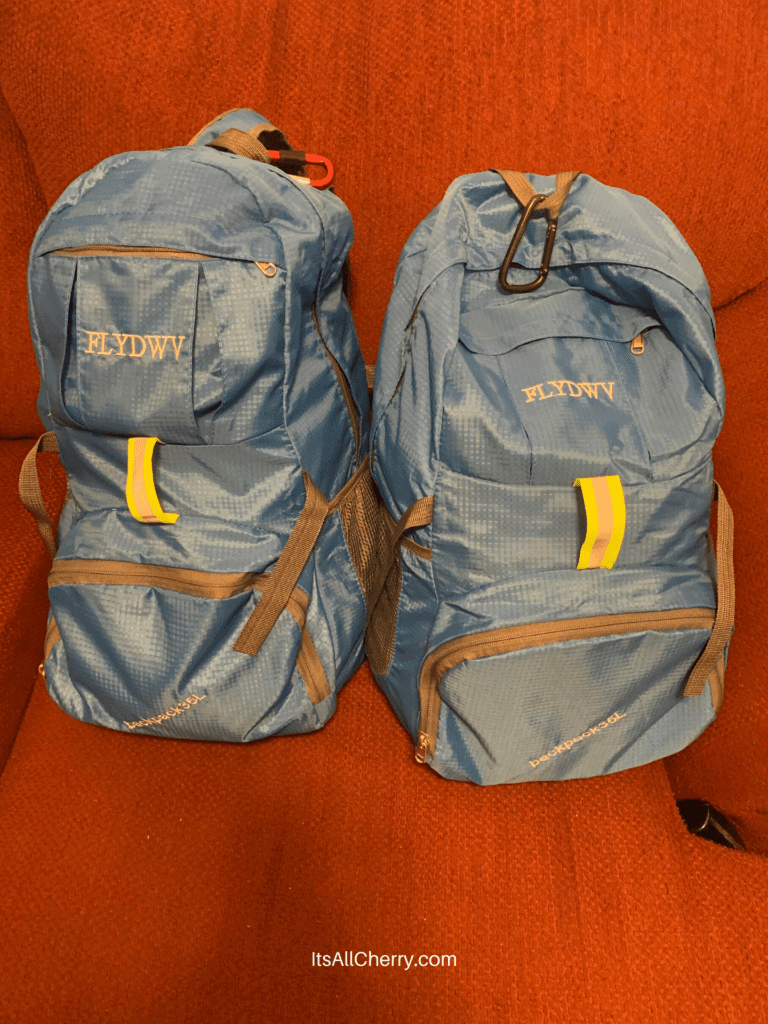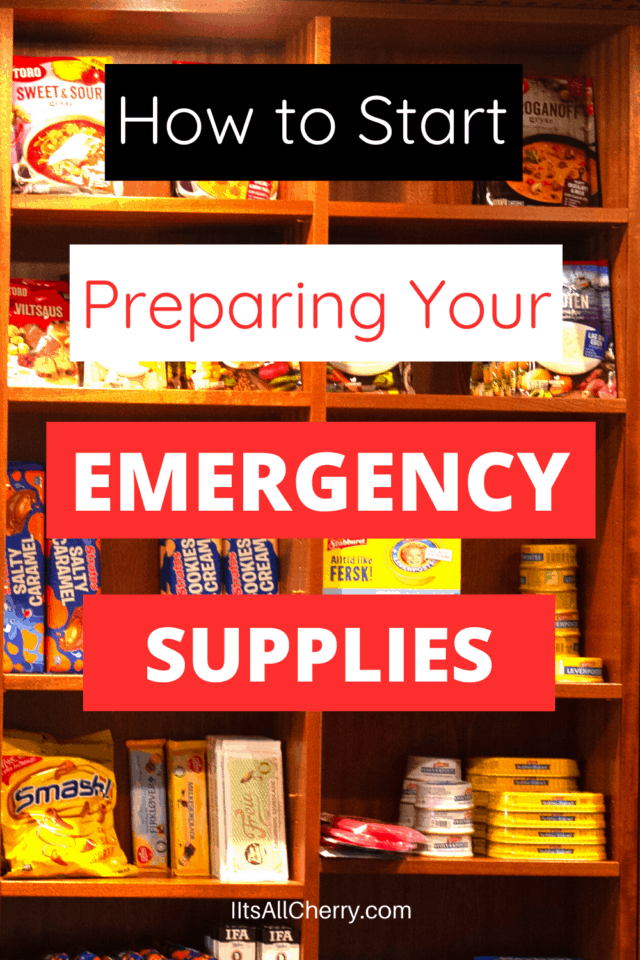This post contains affiliate links where I receive a comission for purchases made through my links at no cost to you. Read my disclaimer for more information.
Here in Hawaii, we are approaching hurricane season. I have to evaluate our emergency supplies to see what has expired, what needs replacing, and what I need to add. With the current pandemic, I’ve been even more eager in making sure we have enough supplies to last for at least 14 days in case we don’t have the finances later on.
Why do you need to prepare emergency supplies? After a natural disaster or emergency, you will need to make sure that you and your family can survive on your own for a few days. Sometimes electricity or water will be cut off so you need to make sure you have supplies to cook, receive communication and news, see in the dark, eat, drink, and keep warm.
The hard part about preparing your emergency supplies is the overwhelming amount of items that you should add to your supply to be prepared for any emergency. This is why I created my free Emergency Supplies Inventory Tracker. You can download it below. The Emergency Supplies Inventory Tracker will help you better organize your supplies and create a faster way to re-evaluate your supplies every year.
Along with the Emergency Supplies Inventory Tracker, here are some simple tips to set up your stockpile of emergency supplies:
Get the basic checklist at Ready.gov
There are many emergency supply checklists out there that you can use. As a beginner, you can go to Ready.gov, to get a basic list of supplies you need to build your emergency kit.
The website also provides you with other information to prepare for different disasters and emergencies. Ready.gov even has games for kids to teach them about disasters and building emergency kits. It’s important to go over this information with your family to prepare yourselves for these scenarios.
3-day emergency kit
Begin by creating a 3 day emergency kit for each family member using what you already have around the house. You may have unused backpacks, random flashlights, and travel toiletries lying around. Mark these off your checklist and add them to your bags.
You will find that you will need more supplies to add to each bag. This is ok. Once you inventory what you have, you can start shopping for what you need.
Don’t forget to include copies of important documents (insurance and health policies for example), IDs, and spare cash in your bags.

Add supplies that are unique to each family member
Some family members require medication, certain clothing, glasses, or feminine hygiene supplies. Young children need diapers, snacks, milk, and toys. If you have pets, you will need to have food, collars, and medications on hand.
You need to make sure that their bag has their specific supplies. You should also label or mark which bag belongs to which person to make it easier for them to access what they need in an emergency.
Emergency supplies shopping tips
Whenever you go shopping online or in store, add a few emergency items to your shopping list. This will allow you to gradually build up your 14 day supply when you buy a little at a time and when you can afford it.
Another tip is to shop for these supplies at the Dollar Tree where you can get generic supplies for cheap. We don’t have a Dollar Tree in Hawaii so I would suggest shopping at Daiso for cheap utensils and hygiene items.
You can also buy a couple of travel toiletries from Walmart for around $1 or buy larger toiletries then put them in smaller travel bottles. This tip is good for your 3-day emergency backpack as you have limited space.
In addition, to save money on your first aid kit, get some generic over-the-counter medicine like tylenol and anti-diarrhea. At Walmart, you can find whole bottles for around $1. Just make sure the expiration date is far in advance.
Some of my Amazon recommendations
These are some items that we have already added to our emergency supplies:
- Eton Rugged Multipowered Portable Emergency Weather Radio & Flashlight: We currently have one at home but I want to add one more as a backup. I like that it can be powered by a rechargeable battery, hand crank, or solar-powered. It has an AM/FM radio, flashlight, and can receive NOAA weather information. You can also use it to charge your phone in an emergency.
- FLYDWV 325L Lightweight Packable Waterproof Travel Hiking Backpack Daypack: These are the backpacks we are using for me and my husband’s emergency bags. I like that they are lightweight, waterproof, foldable, and spacious. There’s also space for water bottles on the side and a chest clip for more support.
- Hydro Flask Standard Mouth Water Bottle: We each have one in our emergency backpacks. These are great to keep hot or cold drinks the same temperature for several hours. The best part is their lifetime warranty so you can get it replaced for free if it is defective after normal and appropriate use.
- 5 Galloon Buckets with Matching Gamma Seal Lids: We have these types of food-grade buckets at home but we have four white buckets with black lids. This is for long term food storage. We have a bucket each for the following: white rice, brown rice, baking supplies, and miscellaneous supplies. We got these mainly to keep pests out of our sugar and rice but these are also useful for keeping long term emergency food supplies.
Regular inventory of emergency supplies
The Free Emergency Supplies Tracker will help you figure out when items will expire, what’s still missing in your stockpile, and what you need to update. It’s important to take a regular look at this list so you can rotate items out and update what’s need. You can put the expiration dates in your google calendar to help you keep track of these dates or make it a point to check this tracker every 6 months
Final thoughts
I’ve been working on our family’s emergency stockpile for several years. It’s a work in progress but we’re at a point now that I can safely say we’re preparing for the upcoming hurricane season.
Download my FREE Emergency Supplies Inventory Tracker to get started and prepare yourself for emergencies. The best time to start stockpiling your emergency supplies is now rather than later.
As you prepare your emergency supplies, you must make emergency plans with your family. Figure out how you can communicate with each other if you are not together, where you can meet, evacuation routes for your home, and how to use items like a radio or walkie-talkie. Involve everyone in the household in this discussion including young children who can understand so everyone is prepared when disaster strikes.



Great post, Cherry! I live on an island in Eastern Canada where we were on lockdown for a week in January because of a huge, sudden snowstorm. No one was prepared for it! I definitely won’t make that mistake again and this article will be a big help in making that happen. Thank you so much for sharing 🙂
Hi Julianne! Thank you for your comment. I’m sorry that you were stuck in a huge snowstorm; I would be so scared. I’m glad my post will help you. 🙂
Hi Cherry this is such a useful article! I live in New Zealand and we are at high risk of earthquakes and tsunamis. Will definitely implement your recommendations !
Hi Monica! Thank you for reading my article. I’m glad it is helpful to you.
Great post! We live in hurricane alley so emergency prep is always important. This is a great reminder to me to check our supplies!
Thank you Rebecca! 🙂